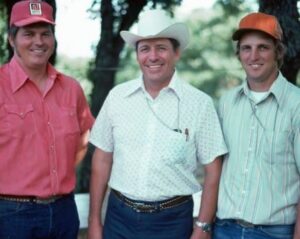Best Friendships, Then and Now: How Our Closest Bonds Shifted from the 1970s to the 2020s

There’s a special kind of warmth that rises when we rewind to the 1970s and 1980s—an era that felt slower on the clock and fuller in the heart. Days seemed to stretch; weekends felt like small summers. Friendship wasn’t a notification—it was a knock at the door, a bike tossed on the lawn, a parent calling from the porch, “Home by dark!” I can still feel the handlebars buzzing in my palms, hear the chain ticking, and see the whole neighborhood stitched together by sidewalks and shared routines. Our best friends lived a few houses away, not behind usernames and Wi-Fi passwords.
That’s not to say those decades were flawless. Money was tight for many families, social change was turbulent, and daily life demanded more patience. Yet people often miss that time because so much of it was unedited and in person. Eye contact mattered. Silence didn’t feel empty. Inside jokes were earned in basements and backyards, not manufactured for a feed. With that in mind, let’s wander through what’s changed—how the way we bond, date, commit, and care for each other has evolved—and what pieces of that older world we can still carry forward.
1) Communication: From “Be There” to “Be Reachable”
Then:
Connection meant presence. You walked over. You rang the bell. You left a note on the fridge or a letter in the mailbox. The family phone was a shared stage: if it rang after dinner, everyone listened. Long-distance calls were planned like mini events—timed, cherished, and often taken in the hallway with the cord stretched taut around a finger. Words traveled slower, but they landed with weight. Even pauses mattered; you could hear someone thinking.
Now:
We are reachable everywhere and sometimes present nowhere. Texts, DMs, voice notes, video chats—our tools are miraculous. We can reconnect with a childhood friend in seconds. But rapid-fire communication can flatten nuance. A hug holds context an emoji can’t. Tone gets lost. Quick answers crowd out careful ones. The gift of immediacy sometimes trades depth for speed.
What endures:
Listening is still the rarest currency. Whether analog or digital, the friendships that last are the ones where people feel heard, not just answered.

2) Courtship: Courage Used to Be the Interface
Then:
Romance began in real time. You walked across a room, heart thudding, and said hello. Numbers were scribbled on napkins, records exchanged, promises made under streetlights. A ride home might be the night’s high point, not the preview reel. Mystery had room to breathe—no profile to pre-judge, no algorithm to shortcut serendipity.
Now:
Apps have opened doors for people who might never have crossed paths otherwise. That’s a genuine win. Yet when meeting is easy, discerning often isn’t. Swipes simplify the search but can complicate the seeing—of a whole person, unfiltered and unfolding over time.
What endures:
Chemistry still arrives unannounced—during a laugh, a shared silence, or the way someone treats a barista. The medium changes; the magic doesn’t.
3) Commitment: From “Forever” to “Grow Together”
Then:
Commitment leaned toward permanence. People coupled younger and built households earlier. Separation carried heavier stigma. Many stayed because they felt they should, and many thrived because they chose to. Either way, there was social pressure to make it work.
Now:
Commitment centers more on alignment and growth. Cohabitation is common; timelines are flexible. People ask, “How do we support each other’s becoming?” not only “How do we stay?” The relationship ideal has shifted from a fixed contract to a living collaboration.
What endures:
The most durable bonds have always mixed devotion with adaptation—promises that stretch with the people who made them.

4) Gender Roles: From “Assigned” to “Agreed Upon”
Then:
Households often ran on inherited scripts. The feminist movement was redrawing the map, but many families still navigated with older directions. Expectations pressed heavy: who works where, who cares for whom, what “good” looks like.
Now:
Partnerships are increasingly negotiated instead of assumed. Roles flex around strengths, season of life, and shared values. Families—by blood, choice, and design—take many forms. The essential shift: authority comes from agreement, not assignment.
What endures:
Respect. The most stable partnerships—then and now—treat responsibility as something shared, not silently shouldered.
5) Friendship: The Lost (and Recoverable) Art of Presence
Then:
Friendship was tangible. You showed up—muddy cleats, board games, cassette tapes. Afternoons stretched into evenings without anyone checking a clock on a screen. Plans were made once and honored. You learned a friend’s moods by the scuff of their shoes, the set of their shoulders.
Now:
We can maintain wider circles across continents, which is its own kind of wonder. But breadth can blur depth. Group chats ping; calendars crowd. “Let’s catch up” becomes a thesis of scheduling. It’s easy to feel known broadly but not deeply.
What endures:Rituals bind. Standing coffee on Tuesdays. Walk-and-talks with phones on airplane mode. Yearly trips that refuse to be rescheduled. Presence, on purpose.

6) Social Media: A Global Scrapbook with a Price Tag
Then (proto-online):
Early message boards and landline tethers hinted at a future of digital gathering, but friendships still formed mostly on porches and playgrounds.
Now:
We live inside a public square that never closes. Social platforms are memory vaults and megaphones—beautiful for organizing, uplifting, and staying in touch. They can also nudge us to perform connection rather than practice it. We measure moments by metrics that were never designed to understand a soul.
What endures:
Curation is not the same as communion. The snapshots are fine; the full conversation still happens off-camera.
7) Emotional Health: From Quiet Endurance to Open Care
Then:
Struggle often went unnamed. People coped privately. Stoicism was praised; therapy was whispered.
Now:
We have more language, more resources, and less stigma. Boundaries are part of love, not the lack of it. Checking in is a skill, not a suspicion. Many friendships now include shared practices—therapy, breathwork, support groups—that help people stay rather than simply endure.
What endures:Tenderness. The friends we remember most were the ones who sat on the stairs with us when we couldn’t move.

8) Community Spaces: Where Friendships Take Root
Then:
Third places—libraries, diners, arcades, barbershops, church halls—were social engines. You didn’t “network.” You ran into people. Proximity did the heavy lifting.
Now:
We have fewer built-in gathering spots, but more intentional ones: coworking nooks, maker spaces, book clubs on patios, pickup leagues under lights. Friendship thrives where we return for reasons other than friendship.
What endures:
Repetition breeds recognition, and recognition breeds care. Show up to the same place enough, and you become part of its story.
9) Distance: Keeping a Thread Across Miles
Then:
Long-distance friendship meant letters with coffee stains and holiday phone calls that cost real money. The scarcity made each exchange feel like a keepsake.
Now:
We can carry people in our pockets. A voice note from a train platform. A photo from the produce aisle. The danger is confusing touchpoints with togetherness.
What endures:
Make anchors: quarterly deep calls, annual visits, a shared playlist, a two-person book club. Choose rituals that the calendar can’t casually erase.

10) Practical Ways to Bring 1970s Sincerity into Today
-
Ritualize presence. A recurring walk or call beats a dozen “we shoulds.”
-
Slow one conversation a week. No multitasking, no scrolling—ask a second question.
-
Write it down. A postcard for everyday news, not just milestones.
-
Host small. Soup at your table does more than a hundred likes.
-
Reclaim silence. Let pauses breathe; meaning often arrives there.
-
Pick a third place. Be a regular somewhere that isn’t home or work.
-
Design your digital. Mute what drains; favorite what feeds; move hard talks off text.
-
Practice repair. Apologize early, clarify often, assume good intent.
-
Name the friendship. Tell people what they mean to you while the moment is ordinary.
-
Protect the long game. Friendships aren’t urgent until they’re gone.
Then and Now: What the Heart Keeps Asking
Friendship in the 1970s felt unhurried because life moved in longer lines. Friendship today can feel scattered because the world arrives in fragments. But the core questions haven’t changed: Will you see me? Will you meet me where I am? Will you stay long enough to know me and be known?
Maybe the invitation isn’t to rewind, but to re-pace—to smuggle a little porch-light patience into our era of permanent acceleration. Whether it’s 1974 or 2025, the deepest friendships are built from the same materials: time, attention, and the gentle courage to show up as we are.
So what do you feel in your bones? Were friendships truly deeper then—or have we simply forgotten how to slow down enough to notice the depth that’s already waiting for us now?